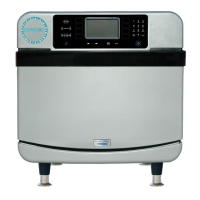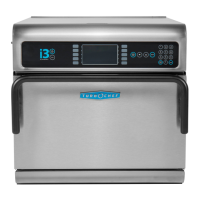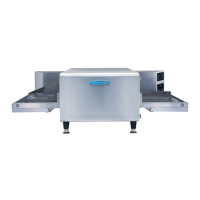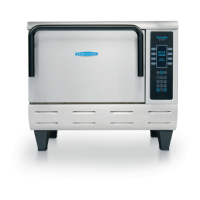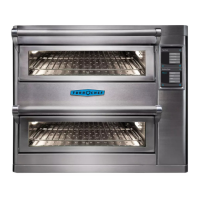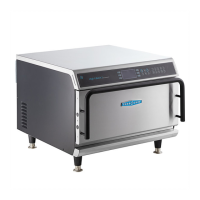46 TROUBLESHOOTING
Fault Code and Description
When Active Refer to...
Warmup Idle Cooking Test Mode
F1: Blower Running Status Bad
a a a a
Page 47
F2: Cook Temperature Low
a
Page 48
F3: Magnetron Current Low
a a
Page 49
F4: Door Monitor Defective
a a
Page 50
F5: Magnetron Over Temperature
a a
Page 50
F6: EC Temperature High
a a a a
Page 51
F7: RTD Open
a a a a
Page 51
F8: Heat Low
a a
Page 52
F9: Cook Cavity Temperature High
a a
Page 52
F10: Communication Failure
a a a a
Page 53
F12: Firmware Reboot
a a a a
Page 53
Fault codes are listed in order of hierarchy. For example, if during cooking the oven experiences an F1
and F2 fault, the oven will report only the F1 fault because the software will halt all actions upon
discovering the F1 fault.
F7: RTD Open
This fault is displayed when the control detects that
one or both of the RTDs is “open.” The display will
show “999
º
” indicating the RTD is open or
disconnected. The fault is cleared when the control
detects continuity.
F8: Heat Low
This fault displays when the oven is warming up
or during Test Mode (page 19) if the cook cavity
temperature fails to rise at least 14
º
F (7
º
C) within a
given 30 seconds.
F9: Cook Cavity Temperature High
This fault will signal that the catalyst has “flashed”
due to excessive grease. The fault occurs when the
RTD senses +650°F (343°C) for more than 40
seconds but less than 2 minutes. The fault will only
appear in the fault log and will not terminate a cook
cycle upon discovery.
F10: Communication Failure
This fault will signal that the UI control board
(Phoenix) is no longer able to communicate with
the I/O control board (SAGE). This fault will ter-
minate a cook cycle upon discovery.
F12: Firmware Reboot
This fault will signal that the UI control board
(Phoenix) became unresponsive for four seconds,
forcing a system reboot. The reboot could occur at
any time, including during cooking.

